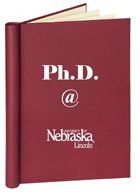Graduate Studies, UNL

Dissertations and Doctoral Documents, University of Nebraska-Lincoln, 2023–
First Advisor
Tsegaye Tadesse
Second Advisor
Michael J. Hayes
Degree Name
Doctor of Philosophy (Ph.D.)
Department
Natural Resource Sciences (Climate Assessment and Imapcts)
Date of this Version
8-2024
Document Type
Dissertation
Citation
A dissertation presented to the faculty of the Graduate College of the University of Nebraska in partial fulfillment of requirements for the degree of Doctor of Philosophy
Major:Natural Resource Sciences (Climate Assessment and Impacts)
Under the supervision of Professors Tsegaye Tadesse and Michael J. Hayes
Lincoln, Nebraska, August 2024
Abstract
Drought, a prevalent and consequential natural disaster, poses widespread, indirect challenges across environmental and societal dimensions. Despite considerable focus on monitoring meteorological and hydrological drought and studying their characteristics, there is a gap in assessing its multifaceted impacts, especially on societal sectors. The dissertation comprises three research essays utilizing artificial intelligence to quantitatively study multi-dimensional drought impacts. The first essay leveraged deep learning and natural language processing to predict multi-dimensional drought impacts from textual datasets, including social media, news media, and citizen scientist reports. The findings demonstrate superior performance over traditional methods and unveil the spatial and temporal heterogeneity of drought impacts. Case studies in California and Nebraska advocate integrating social media, news media, and volunteer reports as innovative metrics for socio-economic drought assessment. The second essay developed an explainable machine learning pipeline to analyze the relationship between traditional drought indicators and multi-dimensional drought impacts. A case study on a California wildfire underscores the framework's potential to reveal the intricate connections between drought indicators and actual impacts. For example, the exacerbated effects of long-term dryness on wildfire intensity, compared to short-term drought conditions, were interpreted from the fine-tuned models. The third essay is focused on investigating the relationship between drought and social unrest, a specific but extreme representation of drought impact. This study combines multiple datasets from remote sensing, climate observation, and census surveys. Spatial and temporal analysis is applied to investigate evidence attributing increased protest frequency to drought conditions. This study also employs a causal machine learning model to quantitatively examine the potential relationships between drought and protests at the sub-state level in India. The research presented in this dissertation emphasizes the significant benefits and critical need for applying cutting-edge artificial intelligence techniques to understand and address the complex and multifaceted impacts of drought, contributing valuable insights for more effective climate adaptation and water resource management strategies.
Advisors: Tsegaye Tadesse and Michael J. Hayes
Recommended Citation
Zhang, Beichen, "Applications of Artificial Intelligence on Drought Impact Monitoring and Assessment" (2024). Dissertations and Doctoral Documents, University of Nebraska-Lincoln, 2023–. 118.
https://digitalcommons.unl.edu/dissunl/118
Included in
Artificial Intelligence and Robotics Commons, Climate Commons, Environmental Indicators and Impact Assessment Commons, Fresh Water Studies Commons, Meteorology Commons, Water Resource Management Commons


Comments
Copyright 2024, Beichen Zhang. Used by permission